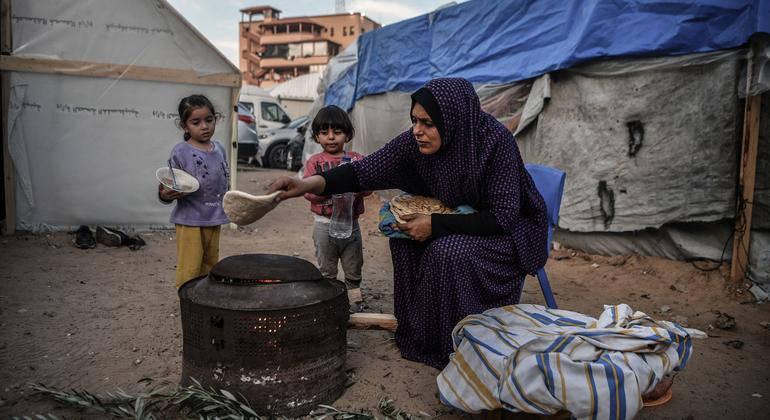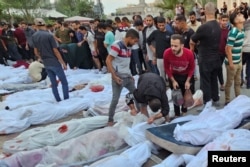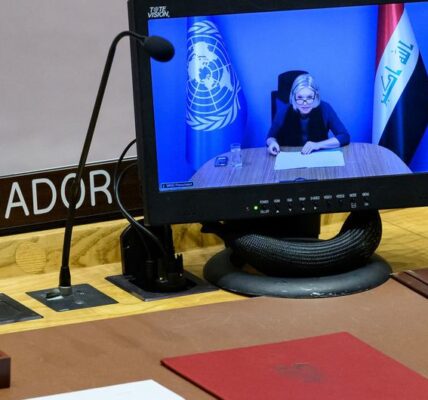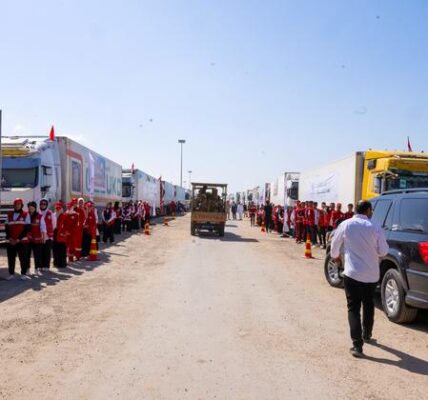
Figures from the global IPC food security initiative show that 133,000 people – or 6 per cent of the enclave’s population – are already experiencing Phase 5 or “catastrophic” food insecurity.
It’s feared this number could rise to around 345,000 people – or 16 per cent of the entire population – between the winter months of November and April next year.
“The risk of famine persists across the whole Gaza Strip. Given the recent surge in hostilities, there are growing concerns that this worst-case scenario may materialize,” the assessment noted.
Situation ‘intolerable’
The Secretary-General is alarmed by the IPC report’s findings amid high displacement and restrictions on humanitarian aid flows, UN Deputy Spokesperson Farhan Haq told reporters during Thursday’s regular news briefing in New York.
“One year into the conflict, famine looms. This is intolerable,” Mr. Haq said.
The Secretary-General is also calling on Israel to immediately reopen all crossing points, he added.
In addition, bureaucratic impediments must be removed, and law and order must be restored inside Gaza so that UN agencies can deliver lifesaving humanitarian assistance, Mr. Haq emphasised.
Key recommendations
The IPC assessment also stressed that only through widespread access to adequate food, medical supplies, water, and basic services across the Gaza Strip, can the risk of a rapid descent into famine be contained.
It calls for an immediate, unconditional and sustained ceasefire, restoration of food systems, and better prevention and management of rising and acute malnutrition.
Blanket supplementary feeding programmes and infant and young child feeding programmes need to be bolstered, including promotion of breastfeeding and care for non-breastfed infants.
UN response
UN agencies for their part continue their efforts to assist all Gazans despite severe challenges, including insecurity, access difficulty, and ongoing evacuation orders and fighting.
The UN Food and Agriculture Organization (FAO), for instance, has prioritised reactivating local food production and restoring the availability of highly nutritious food, especially as the winter season approaches. Even prior to the war, winters in Gaza saw spikes in hunger and malnutrition.
“To curb acute hunger and malnutrition, we must act now – immediately cease hostilities, restore humanitarian access to deliver critical and essential food aid and agricultural inputs in time for the upcoming winter crop planting season which has already started – to allow them to grow food,” said Beth Bechdol, the agency’s Deputy Director-General.
“Humanitarian aid alone is not enough. People need fresh, nutritious food. To make a difference, we also need to support farmers to continue and restart the production of food, as well as the flow of imported food and non-food items,” she added.
Significant livestock losses
FAO also voiced “deep concern” over significant losses of livestock, which are indispensable for the livelihoods and basic survival of Gaza’s population.
The agency has set up a programme to safeguard some 30,000 sheep and goats – representing around 40 per cent of the remaining livestock. As of the end of September, it has distributed fodder to over 4,400 livestock holders in Rafah, Khan Younis and Deir al-Balah, and veterinary kits to about 2,400 herder families.
It stands ready to deliver more essential supplies, including additional fodder, greenhouse plastic sheets, plastic water tanks, vaccines, energy blocks and animal shelters, once access, security, and mobility conditions are restored, FAO said.
“By nourishing these animals, enough milk can be provided for all of Gaza’s children,” it added.
Source: news.un.org



